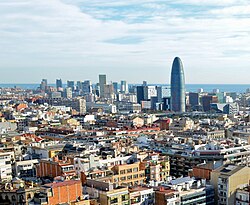Parts of this article (those related to List) need to be updated. The reason given is: Data used is from the 2000s.(June 2024) |

This is a list of the largest metropolitan areas in Spain by population.
Contents
Estimates are from the following sources:
- the "Functional Urban Areas" (FUAs) of the Study on Urban Functions of the European Spatial Planning Observation Network (ESPON, 2007) [1]
- the "Larger Urban Zone" (LUZs) [2] of Urban Audit project (2004), supported by the European Union. [3] Not all cities were included in this survey. [3]
- calculations by Francisco Ruiz from data of the Instituto Nacional de Estadística (2008 estimates). [4] [5] As well as "metropolitan area" data, [6] Ruiz has produced larger conurbation data for some areas. [7] The "conurbation" figure is used where available, and is cited as such; otherwise, the "metropolitan area" figure is used.
The figures differ between the reports due to the difference in survey dates and differences in methodology. For example, ESPON considers Oviedo–Gijón–Avilés as a single FUA, while Urban Audit has separate LUZs for Oviedo and Gijón. Similarly, Vilanova i la Geltrú is included in Barcelona metropolitan area by ESPON, but as a separate conurbation by Ruiz.









